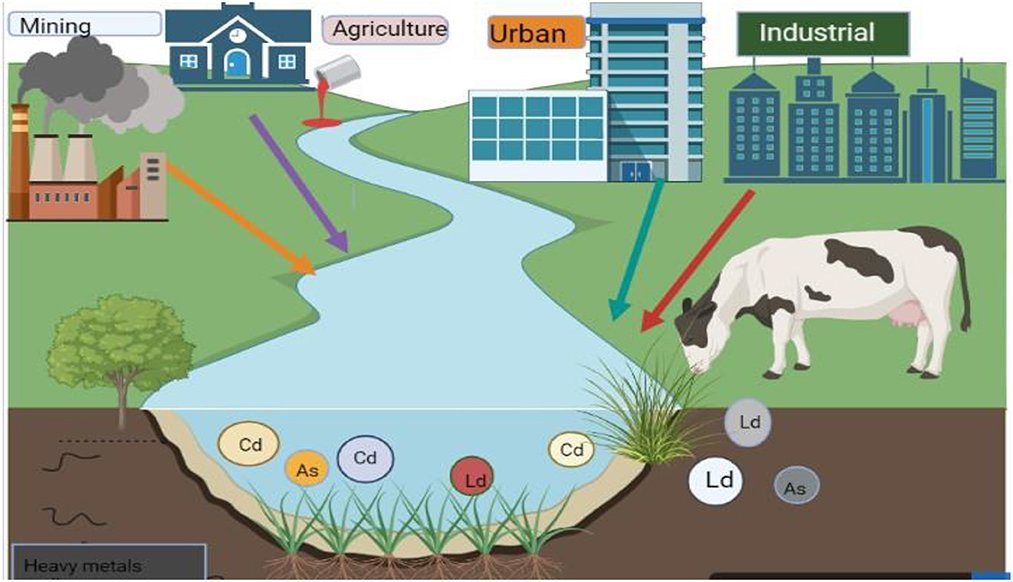Introduction to Kleptotoxicity
Kleptotoxicity is a fascinating and intricate biological phenomenon that showcases the adaptability and ingenuity of nature. It refers to the ability of certain animals, such as sea slugs, frogs, and other similar species, to acquire and retain toxins from their diet. These toxins, often obtained from consuming poisonous plants, animals, or microorganisms, are then utilized by the animals themselves for self-defense. This remarkable survival strategy allows these creatures to deter predators and maintain their position in the ecological food chain. The term “kleptotoxicity” is derived from the Greek word klepto, meaning “to steal,” and toxicity, referring to the poisonous substances these animals acquire.
In this article, we will explore the concept of kleptotoxicity, its biological mechanisms, and how it benefits various species. By diving deep into real-world examples and examining how this phenomenon influences the dynamics of ecosystems, we can appreciate the intricate ways in which animals have evolved to defend themselves.
The Mechanism of Kleptotoxicity
Kleptotoxicity involves a fascinating process where animals absorb and store toxic compounds from their environment. These toxins can be obtained from consuming certain types of food, such as toxic plants, animals, or other natural sources of harmful chemicals. Once ingested, the toxins are either retained in the body or stored in specific organs, such as the skin, digestive system, or specialized glands. The accumulated toxins are then used as a defense mechanism against predators, serving to deter attacks by making the animal unpalatable or dangerous.
The key to kleptotoxicity lies in the ability of these animals to retain the toxins within their systems without suffering any harmful effects. This is made possible by a combination of biological adaptations, such as specialized detoxification mechanisms, modified digestive systems, or resistant skin membranes. In some cases, the animal’s diet is composed primarily of toxic substances, allowing them to accumulate high concentrations of these toxins over time.
Examples of Kleptotoxicity in Nature
One of the most well-known examples of kleptotoxicity is found in the sea slug Elysia chlorotica, commonly known as the Eastern Emerald Elysia. This sea slug has the remarkable ability to obtain and retain toxins from the algae it consumes. The slug feeds on algae that produce toxic compounds, which it then stores within its own tissues. As a result, the sea slug becomes toxic itself, providing a strong defense against potential predators. Predators that attempt to consume the sea slug are deterred by its bitter taste and harmful toxins, giving the slug a significant survival advantage.
Another notable example of kleptotoxicity can be seen in the case of the poison dart frog (Dendrobatidae). These brightly colored frogs, found primarily in Central and South America, obtain toxins from the insects they consume, particularly ants and termites. The toxins in the frogs’ bodies are derived from the alkaloids present in these insects. The frogs store the toxins in their skin, which serves as a potent defense mechanism against predators. The vibrant colors of poison dart frogs serve as a warning signal to potential predators, signaling that the frogs are toxic and should be avoided. This is an example of how kleptotoxicity is often linked to aposematism, a biological phenomenon where bright colors or markings are used to warn predators of an animal’s toxicity.
How Kleptotoxicity Benefits Animals in the Wild
The primary benefit of kleptotoxicity is that it provides animals with a highly effective defense against predation. In ecosystems, the threat of being eaten by a predator is ever-present, and many species have developed unique strategies to avoid becoming prey. Kleptotoxicity gives animals an advantage by making them either toxic or distasteful, thus reducing the likelihood of being consumed by predators. By acquiring toxins from their diet, these animals avoid the need to produce their own toxic substances, saving energy and resources.
Furthermore, kleptotoxicity can provide animals with a degree of protection even in environments where predators have evolved to avoid certain toxic species. For example, animals that obtain toxins from specific plants or microorganisms may become immune to the toxins themselves, while still being able to use them for defense. This creates a complex ecological relationship where the animals involved have found a way to turn the toxicity of other organisms into an advantage.
Kleptotoxicity and Ecological Relationships
Kleptotoxicity has profound implications for the relationships between species within ecosystems. Animals that engage in kleptotoxicity rely heavily on the availability of toxic food sources, which in turn affects the populations of the organisms they consume. For example, sea slugs that feed on toxic algae may have an impact on the abundance of these algae in their environment, while also affecting the predators that rely on algae as their food source.
In the case of poison dart frogs, their relationship with the insects they consume is an essential aspect of their survival strategy. These frogs depend on specific species of ants and termites for the toxins that make them toxic. The presence and abundance of these insect populations directly influence the survival and reproductive success of poison dart frogs. This creates a delicate balance within the ecosystem, where the interactions between different species are tightly interwoven.
The Evolutionary Significance of Kleptotoxicity
Kleptotoxicity is not just a fascinating biological curiosity but also an important example of evolutionary adaptation. The ability to acquire and use toxins for defense represents a significant evolutionary advantage for animals in certain environments. Over time, species that have evolved kleptotoxicity have been able to survive and thrive in environments where predators are abundant, while species that lack this ability may have faced greater challenges in avoiding predation.
In addition to providing a defense mechanism, kleptotoxicity may also influence the evolutionary development of other traits in animals. For example, animals that rely on toxins for defense may develop bright coloration as a warning signal to predators, a phenomenon known as aposematism. This bright coloration serves as a visual cue, signaling to potential predators that the animal is toxic and should be avoided. The interplay between kleptotoxicity, aposematism, and predator-prey dynamics has driven the evolution of numerous species in fascinating ways.
Kleptotoxicity in Modern Research
The study of kleptotoxicity has garnered significant attention in the field of ecology and evolutionary biology. Researchers are exploring the genetic, biochemical, and ecological factors that enable animals to acquire and retain toxins. Understanding the molecular mechanisms behind kleptotoxicity could lead to advances in medicine, agriculture, and conservation.
For example, the study of toxic compounds found in animals with kleptotoxicity could provide insights into the development of new drugs or treatments. Many of the toxins retained by these animals have powerful pharmacological properties, such as the ability to block ion channels or interfere with cellular processes. By studying how these toxins are absorbed, stored, and used by animals, scientists may be able to identify new therapeutic agents for human use.
Challenges and Future Directions
While kleptotoxicity offers many benefits to the animals that possess it, it also presents challenges. For one, the ability to retain toxins from the diet requires specialized biochemical processes, and not all animals are equipped to handle such toxic substances. In addition, changes in the availability of toxic food sources, such as the depletion of toxic plants or the decline of prey species, could negatively impact animals that rely on kleptotoxicity for defense.
Future research into kleptotoxicity will likely focus on understanding how these animals manage the risks associated with acquiring and storing toxins. It will also be important to explore the ecological consequences of kleptotoxicity on predator-prey relationships and the broader ecosystem. By continuing to study this fascinating phenomenon, we can gain a deeper understanding of the ways in which animals adapt to their environments and develop novel survival strategies.
Conclusion
Kleptotoxicity is a remarkable example of nature’s ingenuity, demonstrating how certain animals have evolved the ability to steal toxins from their diet and use them for self-defense. From sea slugs to poison dart frogs, kleptotoxicity provides these creatures with a unique advantage in the fight for survival. This ability to acquire and retain toxins showcases the complex interactions between species in ecosystems and highlights the fascinating ways in which evolution shapes the traits and behaviors of animals. As research into kleptotoxicity continues, we will undoubtedly uncover new insights into the biological processes that make this defense strategy possible and its broader implications for ecology and medicine.


